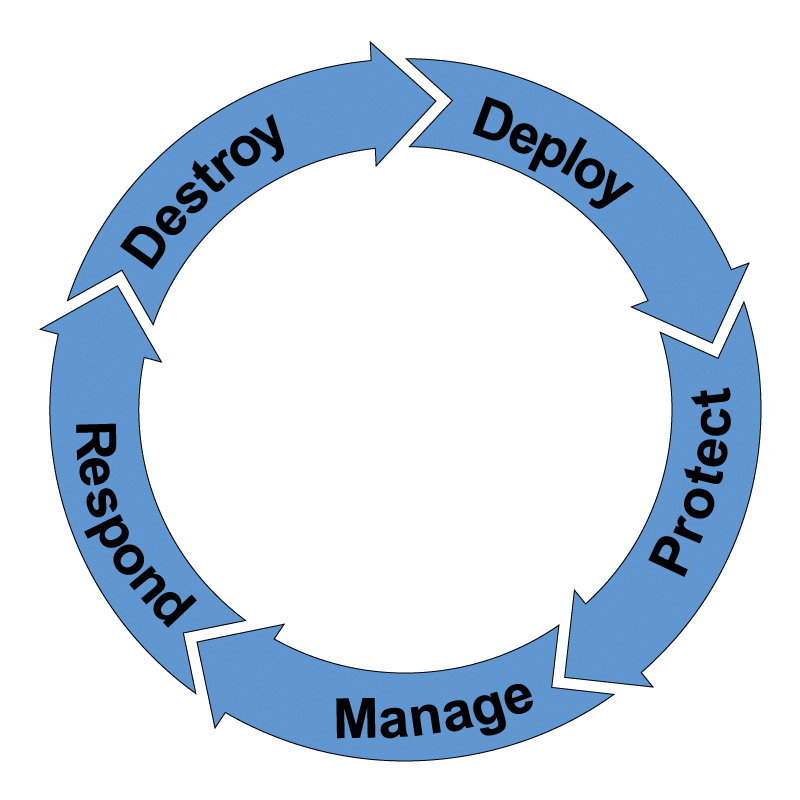The Hidden Cost of Reactive IT: Why Smart Leaders Choose a Proactive Security Strategy
 Think about the last time your team was blindsided by an unexpected IT issue.
Think about the last time your team was blindsided by an unexpected IT issue.
Maybe it was a ransomware scare that shut down operations. A surprise server failure. A critical software vulnerability you didn’t see coming. Now think about the ripple effects: disrupted productivity, delayed client deliverables, anxious staff, or worse…a damaged reputation.
The truth is that most organizations are still operating in reactive mode when it comes to IT and cybersecurity. They’re firefighting, band-aiding, and hoping their security tools are “good enough.”
But hope isn’t a strategy.
At Reclamere, we help IT and cybersecurity leaders in highly regulated industries break this cycle and shift toward proactive, resilient planning. Through our CSO360 program, we equip organizations with the leadership and strategy needed to get ahead of evolving threats without the overhead of a full-time Chief Security Officer.
Let’s unpack why reactive IT is no longer sustainable and what proactive cybersecurity leadership can do instead.
The High Cost of Reactive IT: What It’s Really Costing You
If your IT team spends more time responding to issues than preparing for them, you’re not alone. But the risks, and costs, add up fast.
Endless Firefighting
A reactive approach keeps your team stuck in survival mode. There’s no time for strategic initiatives when every day brings another outage, ticket, or system alert.
What it’s costing you: Time, innovation, and morale.
Quick Fixes That Fail
Just like patching a leaky pipe with duct tape, stop-gap IT fixes often overlook the root cause. This creates technical debt, system fragility, and inconsistent infrastructure.
What it’s costing you: Operational efficiency and future budget.
Cybersecurity Exposure
Reactive IT often means you’re implementing defenses after an incident. That’s a dangerous place to be, especially when you’re accountable to regulatory frameworks like HIPAA, PCI DSS, or SOX.
What it’s costing you: Your data, your clients’ trust, and potential fines.
Why a Proactive Cybersecurity Strategy is a Game-Changer
Forward-thinking organizations recognize that investing in proactive IT and cybersecurity leadership isn’t just smart; it’s essential. Here’s what a proactive model looks like and why it delivers real ROI.
Threat Prevention Over Problem Resolution
Proactive cybersecurity means aligning systems, people, and processes to prevent threats (not just respond to them). This includes regular risk assessments, vendor audits, and policy updates integrated into business operations.
How it helps: Reduces the likelihood of breach and system downtime.
Continuous Monitoring & Intelligence
By continuously monitoring systems and threat activity, you can identify potential vulnerabilities before they’re exploited.
How it helps: Faster threat detection = faster response = fewer losses.
Predictive Analysis for Smarter Decisions
Leverage analytics and threat intelligence to anticipate risks, not just react to them. Tools are important—but knowing where and how to apply them is critical.
How it helps: Increases efficiency, improves resource allocation.
Regular Patching and Governance
Unpatched systems are one of the top ways attackers breach organizations. Proactive IT ensures software, firewalls, and devices are regularly updated, patched, and reviewed.
How it helps: Strengthens your regulatory compliance and security posture.
The Reclamere Advantage: Why Strategy Matters
There’s a misconception that proactive IT requires a massive internal team or a full-time Chief Security Officer (CSO). But for most SMBs, that’s simply not feasible.
That’s where Reclamere’s CSO360 program comes in.
Our Virtual Chief Security Officer (vCSO) model gives you the strategic oversight of an executive security leader, without the six-figure price tag. We act as an extension of your leadership team, helping you:
- Assess and improve your cybersecurity posture
- Develop and test IRP and BCDR plans
- Align security strategy with your business goals
- Conduct quarterly reviews and compliance check-ins
- Guide vendor onboarding, offboarding, and oversight
We bring 20+ years of experience supporting regulated industries including financial services, healthcare, education, law, and local government. Our approach isn’t cookie-cutter; it’s tailored to your risk profile, regulatory obligations, and business operations.
5 Questions Every Cyber Leader Should Be Asking Right Now
If you’re still unsure whether you’re stuck in reactive IT, ask yourself:
- Are we conducting regular cybersecurity posture assessments?
- Do we have tested, documented plans for incident response and disaster recovery?
- How often are we evaluating our third-party vendor risk?
- Are our IT and cybersecurity goals aligned with business objectives?
- Is someone in the organization truly accountable for security strategy?
If these questions feel difficult to answer, you’re not alone. And you’re not behind. But it’s time to start.
It’s Time to Get Ahead
Reactive IT isn’t sustainable. And in today’s threat landscape, it’s not safe.
With the right partner, you don’t have to go it alone. At Reclamere, we help you shift from reactive chaos to proactive confidence. Our CSO360 service gives you the leadership, planning, and peace of mind your organization needs to secure the future.
Ready to future-proof your business?
Learn more about CSO360 and schedule a consultation today!








